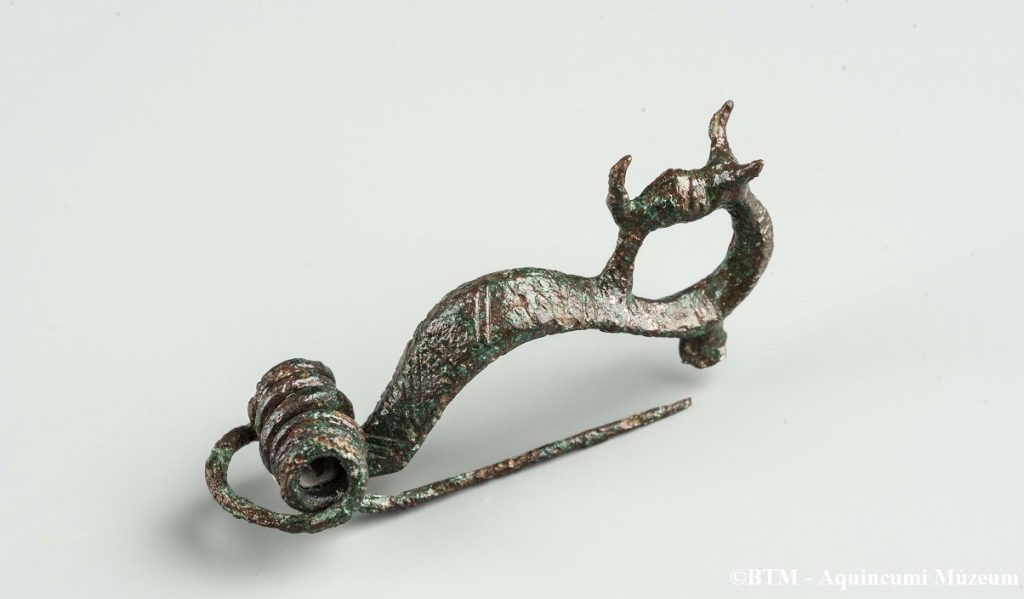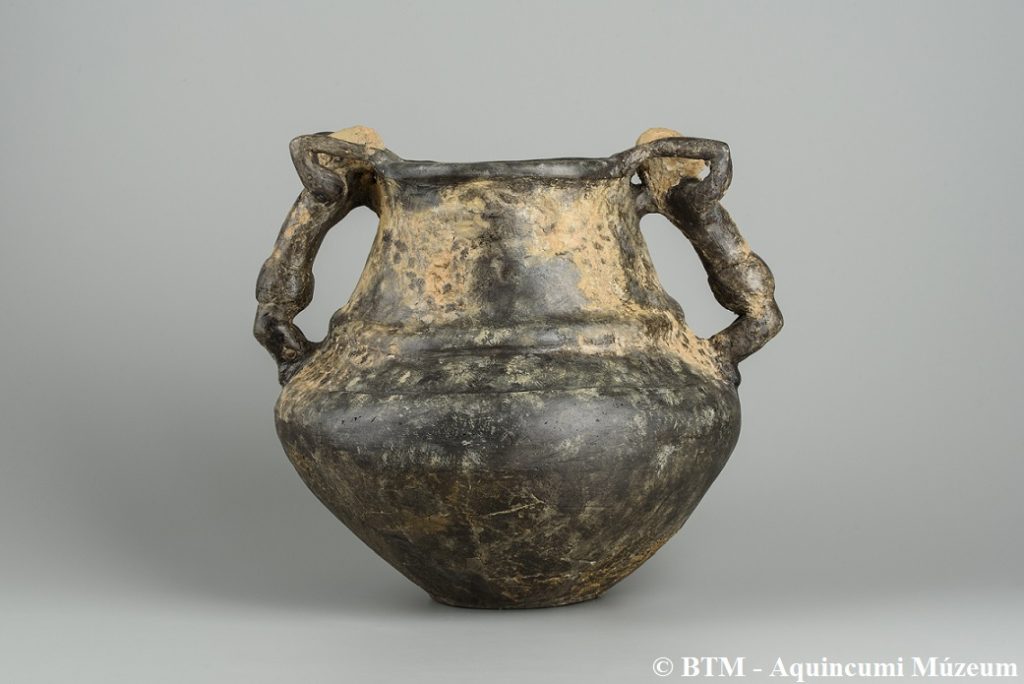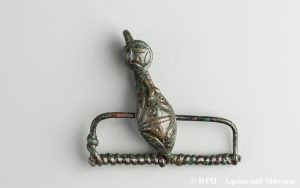The temporary exhibition of the Budapest History Museum’s Aquincum Museum presents the most exciting finds from the cemetery at the northern tip of Csepel Island used by the Celts for over two hundred years. Interview with the curator, archaeologist Attila M. Horváth.
How did the exhibition get the title: The people of dragons and birds?
Animal motifs on jewellery were very popular with the Celtic peoples, and they used lots of bird-shaped or stylised-bird-shaped fibulas. The fibulas were brooches for fastening clothes. They were customarily used in pairs, connected with a chain – women primarily wore it in this fashion – in some cases a third fibula was also on the chain. These included bird-like fibulas and we also have three with dragon motifs, which had been very popular with the Celts already since the early Celtic period.

Dragon-head or ringed animal-head bronze fibula (4th c. BCE)
How did the Celts come to what is now Budapest?
A large eastward migration began during the 5th century. They finally reached the Carpathian basin in the first half of the 4th century, at first along the Danube; later on they seized Transdanubia and also the Great Hungarian Plain. The Celtic tribes who came to Csepel Island – whose names, unlike those of numerous other tribes, we do not know – also reached the area in the first half of the 4th century.
How did you find the exhibited archaeological finds?
We unearthed the exhibited archaeological finds during a multiyear excavation. A large project began in 2004. The Municipality of Budapest decided to build the large Central Sewage Treatment Plant at the northern tip of Csepel Island. As part of this, we carried out a trial excavation in 2004. That is when the first graves were found. In 2006, when we completed the excavations before the start of construction, on an area of some 12 hectares, we were able to uncover, among many other highly important and valuable finds, this Celtic cemetery.

Pseudo-kantharos with anthropomorphic handles (from grave no. 149, mid-3rd c. BCE)
What is the most important find of the exhibition?
One of the most important finds of the exhibition is the cremation grave itself, which can be seen in the display case opposite the entrance. The grave likely dates to the middle third of the 3rd century and contains multiple objects which belong to a transitional phase. These include two characteristic objects, which can be considered the chief finds of the cemetery. One is an iron sword with a scabbard engraved with an s-shaped tendril-pair motif. This is the only decorated weapon from the cemetery. We found eight such swords from this period, but only this one was decorated.
The other, which is one of the most valuable and significant finds in the whole cemetery, is an earthenware vessel with two handles made specifically for the purpose of the burial. The kantharos in the Greek world was a small drinking vessel with two handles. The object found in Csepel is a so-called pseudo-kantharos vessel, which is an adaptation of the original Greek vessel type for local vessels here. Of this type, where both handles depict human figures, we know of altogether two vessels: one from Transylvania (Maroskarna, now Blandiana), and one from Csepel Island. This is a very valuable and important find.

Bird-shaped cast bronze fibula with crossbow spring (5th-4th c. BCE)
What is your favourite find?
My favourite find is a bronze, bird-shaped fibula that resembles a sleeping duck. It has a long bill, which splits into two at the end, and its surface is decorated with various lines and geometric motifs. This is a rather early type; it was known in the Celtic cultural sphere already since the 5th century BCE, but the piece discovered here is one of my favourites, and for me, of course, the most beautiful artefact.
Zoltán Quittner
Photographs by Nóra Szilágyi
The exhibition “The people of dragons and birds – The Celts of Csepel Island” can be seen until 31 October 2019 at the Aquincum Museum.
Click here to read the previous entries of the Aquincum Museum’s blog.


